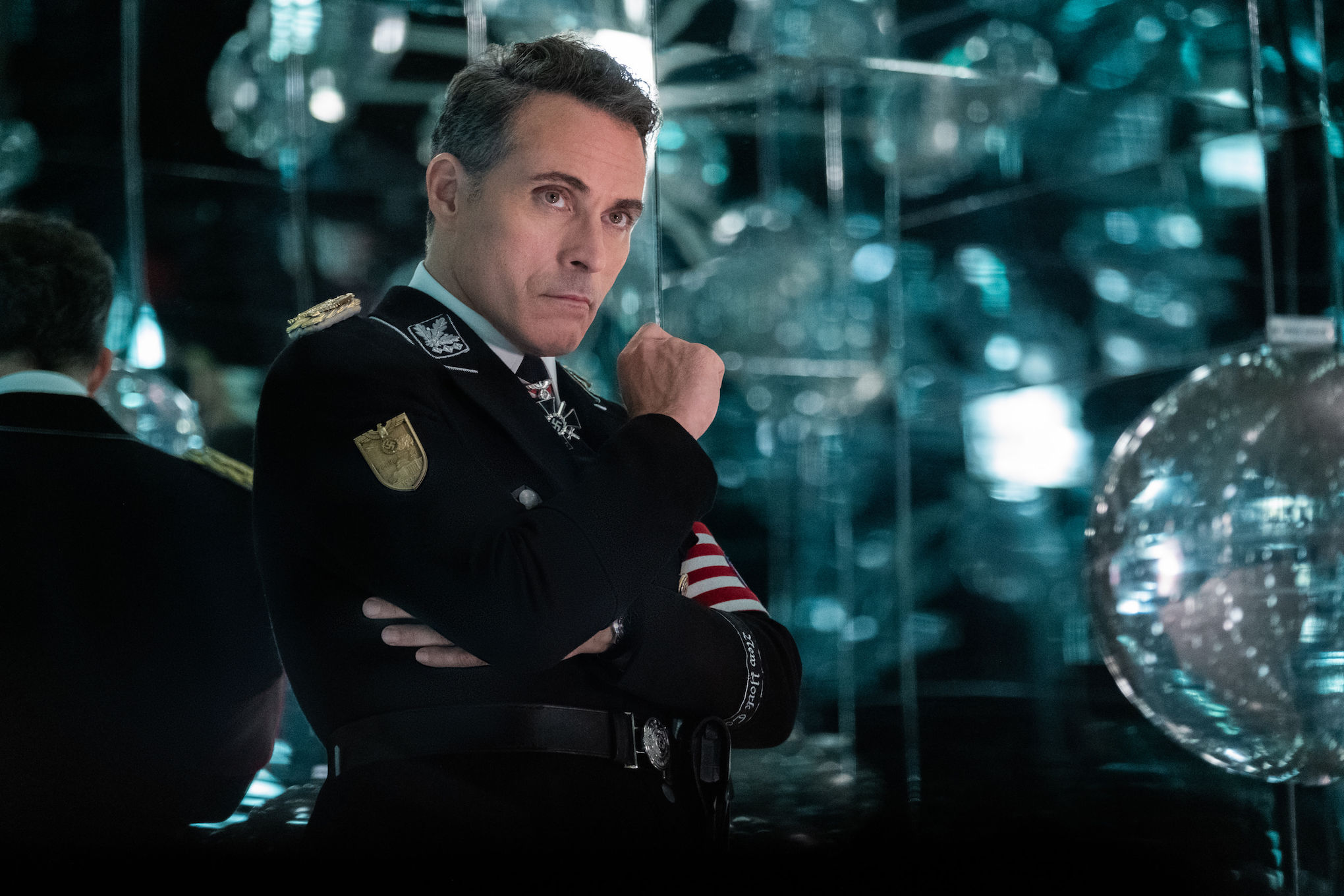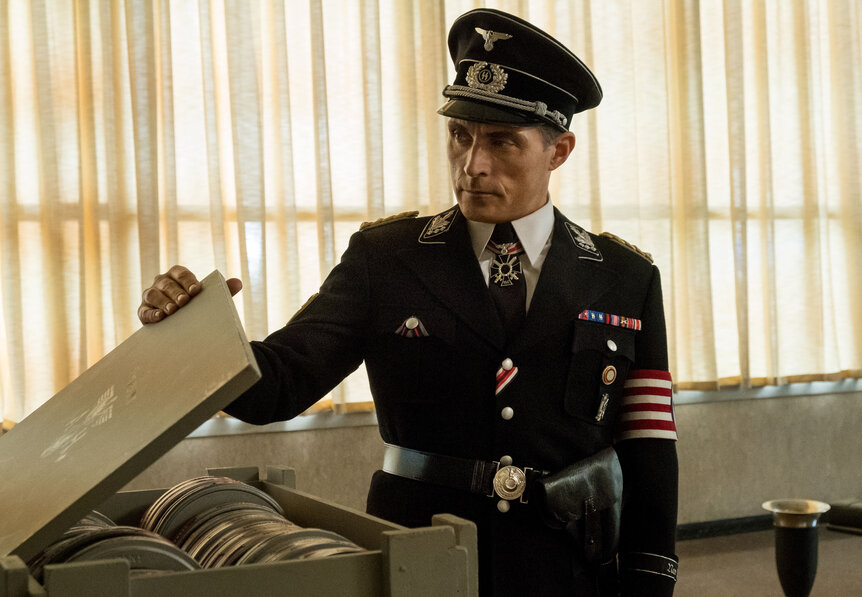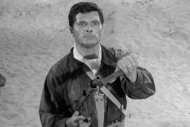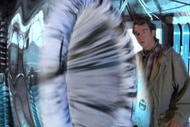Create a free profile to get unlimited access to exclusive videos, sweepstakes, and more!
The swastikas on The Man in the High Castle set caused problems for people, were destroyed

One of the aspects of The Man in the High Castle that made it so captivating for not just the audience but the men and women making it was the attention to detail that went into crafting every element of the production. From the clothes worn to the books on the shelves to the Corn Flakes at the breakfast table, everything was designed to bring to life a version of the 1960s that would have followed the Nazis and Japan winning World War II.
At times, this makes the show a deeply unsettling experience — and, at other times, unsettling because of how normal it all seems. Rufus Sewell, who played American Nazi official John Smith in the series, told SYFY WIRE that "one of the strange things that happens, verging on the unhealthy, is that you become naturally very used to this just being your surroundings."
And that meant becoming used to the presence of swastikas as decorations for the set, props, and wardrobes. The infamous symbol of the Nazi regime is so controversial that it's illegal to display it in Germany, but according to Sewell, over the course of filming the series, its presence became so normalized that "we didn't even see them. We didn't even realize our linoleum floor was a swastika for an entire season."
Chelah Horsdal, who played Smith's conflicted wife Helen, says that the symbol "lost its power."
And for Sewell, "your Nazi costume just becomes clothes you're wearing." However, he adds, "This is an object lesson in what happens to people, how we get used to situations. If you were to jump into them, you know overnight would seem monstrous, but day by day, you get used to things."
The actors would, however, experience reminders that beyond the set, these images had a horrific power. This even extended beyond the use of swastikas, according to Joel de la Fuente, who played Kempeitai Chief Inspector Takeshi Kido.
One day, the show was shooting an outdoor scene on the campus of the University of British Columbia, and as he recalls, "there were swastikas and the Imperial flag everywhere. And it's funny, because I'm used to seeing that with swastikas, but I saw an older Asian-Canadian person walk by and see the Imperial flag hanging there. And the response on their face, the visceral reaction that they had, was something I don't think I'll ever forget."
New rules for location shoots, he says, were implemented that day.
While the rules included covering up costumes in between takes, Horsdal experienced a particularly striking moment during the filming of the show's third season: Her wardrobe was so detailed that designer Catherine Adair sewed labels reading "made by Aryan hands" into the dresses, where a camera would never be able to see. And one day, while they were shooting on location in a downtown Vancouver hotel, she happened to also be wearing a brooch with a swastika on it, as befitting her character, an upstanding woman of the American Nazi regime.
"Generally, all of our departments were really conscious on location of covering up any of the iconography and making sure that no one from the real world was going to see these images," she says, leading into a difficult story about their lunch break that day. "But I had forgotten that there was a swastika on my costume, and I was walking through the lobby and I very enthusiastically, in classic Chelah fashion, said hello to a couple of people who were sitting there. And the man looked at me, and looked at my swastika, and looked back at me. And he was just shocked."
In the moment, Horsdal immediately apologized, explaining that they were shooting a TV show. "I was so used to just roaming around in it, and I forgot that I have no idea what this man's history is," she says. "I have no idea what this image means to him. I get goosebumps now, thinking about it."
Executive producer Isa Dick Hackett told SYFY WIRE that after 12 years of working to bring The Man in the High Castle to the screen, she is quite aware of how challenging the iconography the show requires can be. "Fortunately, our worldbuilding team is so outstanding, and they were incredibly sensitive and thoughtful about how they were incorporating it in the show," she says. "Everybody took this very seriously."
In fact, when it came to props that utilized swastikas (such as the American/Nazi flag, which featured a swastika in place of the white stars), Hackett says that there was a closet in the props department where they were all stored, and from the very beginning of production that closet was kept under lock and key.
And now that the show is over, don't go looking for any of those props to appear in charity auctions or elsewhere. According to Hackett, every single one of them has been destroyed.
"Even in the Smith apartment, where there were home furnishings that had swastikas, it was all destroyed if it couldn't be stripped down or hammered away," she says. "That was for the show, and not for collectors."
The show's legacy may offer up many important ideas for viewers. But the most important might be this: Fascism and its symbols need to be torn down.
The Man in the High Castle is streaming now on Amazon Prime.



























